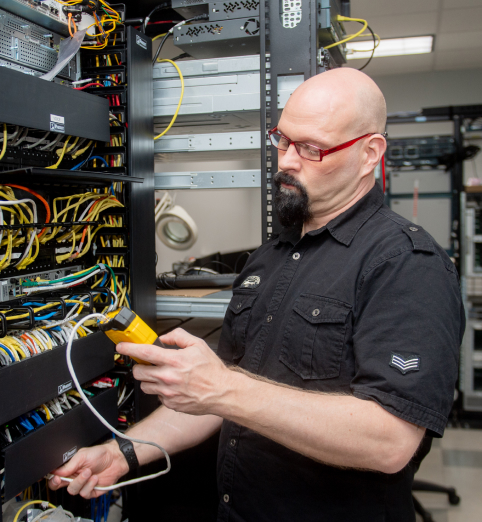A slow network is a drag—both on your patience and on your business’ productivity. At their most benign, network bottlenecks can be a minor inconvenience or temporary annoyance. But left unresolved, network bottlenecks can create performance and user-experience issues for customers, negatively impacting your bottom line and reputation.
We rounded up several common causes of network bottlenecks, plus a few guiding principles for how you can avoid them.
- Too many devices accessing the network. The more vehicles on a road, the slower traffic moves along. The same concept can loosely apply to your network. Servers get flooded with activity from more devices than they can handle, which leads to lags in the network for everyone.
- Bandwidth Hogs. Some programs or devices eat up more bandwidth than others, potentially slowing everything down. While some of those bandwidth “hogs” might be mission-critical processes and should get priority (like VOIP phones for a service desk), others (like streaming cat videos) can consume more than their fair share. (Cats with cucumbers—hilarious!) Unless you’ve set up your network to prioritize certain traffic over others, all traffic will be treated the same, and once the network gets congested, everything will be affected.
- Outdated or Insufficient Hardware. Nothing lasts forever, and that goes for hardware, too. Hardware you installed several years ago may no longer be sufficient to support the amount of traffic you’ve introduced through the addition of more employees now accessing the network.
- Malfunctioning Hardware. In some instances, your network technology may be fine, but it wasn’t set up properly or needs to be reconfigured. It could be something as simple as a connection cable that was accidentally bumped or wiggled loose overtime (we’ve all been there). We can’t emphasize enough the importance of regular monitoring and routine maintenance to ensure all systems are functioning at their full potential.
- Poorly Configured Network. At some point in our lives, we all had that teacher who liked to repeat ad nauseam, “Failing to plan is planning to fail.” Turns out they were right, though. A well-functioning network should be designed with the specific needs of the business in mind. A SaaS company, for instance, has very different needs and will use its network in very different ways than an e-commerce store or university. You may have the best equipment money can buy, but if you didn’t accurately assess the amount of traffic your network handles on a daily basis, then your setup may not fit the needs of your company and you’ll bump up against bandwidth issues sooner, rather than later.
Good city planners thoughtfully plan out transportation infrastructure, monitor daily traffic flow, and perform routine checks and upkeep. A similar approach can be taken for network management. The best way to avoid network bottlenecks is through proactive planning, regular monitoring, and routine maintenance.
- Planning and configuring your network strategically. Many of the bottlenecks we covered above could have been avoided through a bit of upfront planning. Taking the time to identify your businesses traffic needs up front is vital in building a network that can grow and scale alongside your business. You should be able to identify, for example, the activities that are mission-critical and configure your network to prioritize that traffic.
Whether you are in the process of designing your network for the very first time or reevaluating your existing network, it’s often worthwhile to reach out to an expert, like Inteleca, who can help you navigate everything from an initial needs assessment and scoping out a realistic budget to acquiring and setting up the actual equipment. - Regular network monitoring. Regular monitoring is like keeping a finger on the pulse of your network health. It can alert you to traffic build-up before it becomes a serious problem and can give you a jump on identifying the root cause of that problem, helping you avoid unnecessary effort or expense.
For example, if a completely unnecessary device or program is eating up a significant amount of bandwidth, then investing in more hardware to increase your overall bandwidth (rather than just removing the device or program) may alleviate the network congestion—but at an unnecessary cost. - Routine hardware maintenance and upgrades. Putting a solid Asset Lifecycle Management plan in place will help you maximize your existing network capabilities, while also keeping your network a few steps ahead of your business growth and resulting bandwidth needs. At Inteleca, we help our clients get the most out of their assets by not only managing regular checks and maintenance, but also identifying opportunities to lengthen the life of equipment by reallocating it to other areas of the business when it’s time for mission critical upgrades.
Just can’t seem to figure out what’s causing your network lag? Reach out to one of our engineers. We can assist in identifying the root cause and guide you toward getting a plan in place to avoid network bottlenecks in the future.



